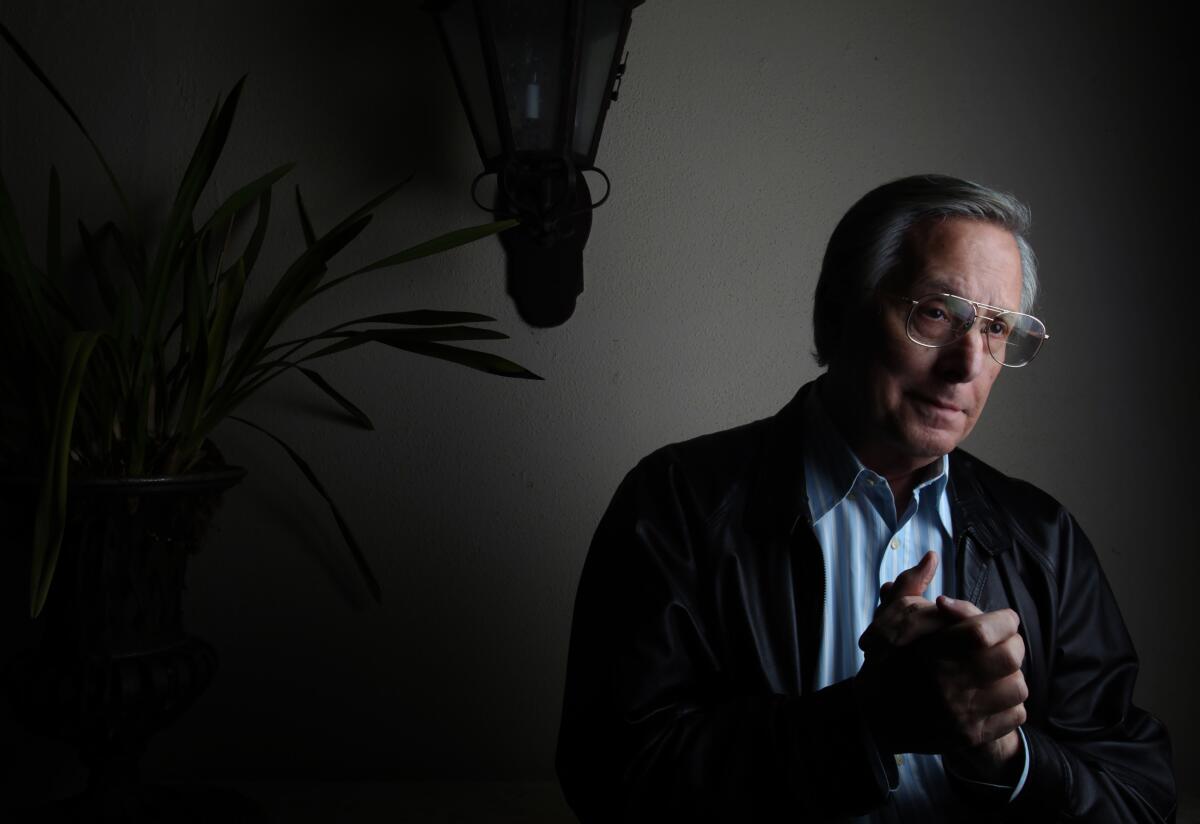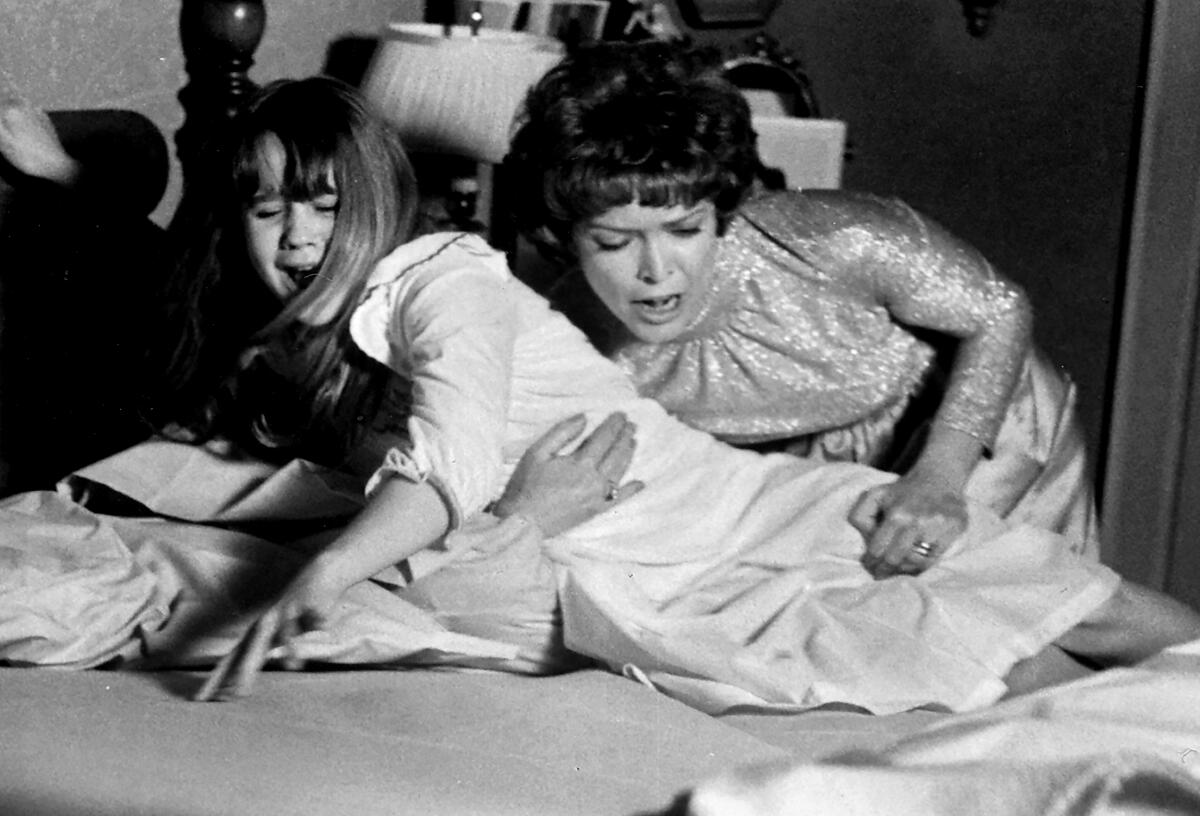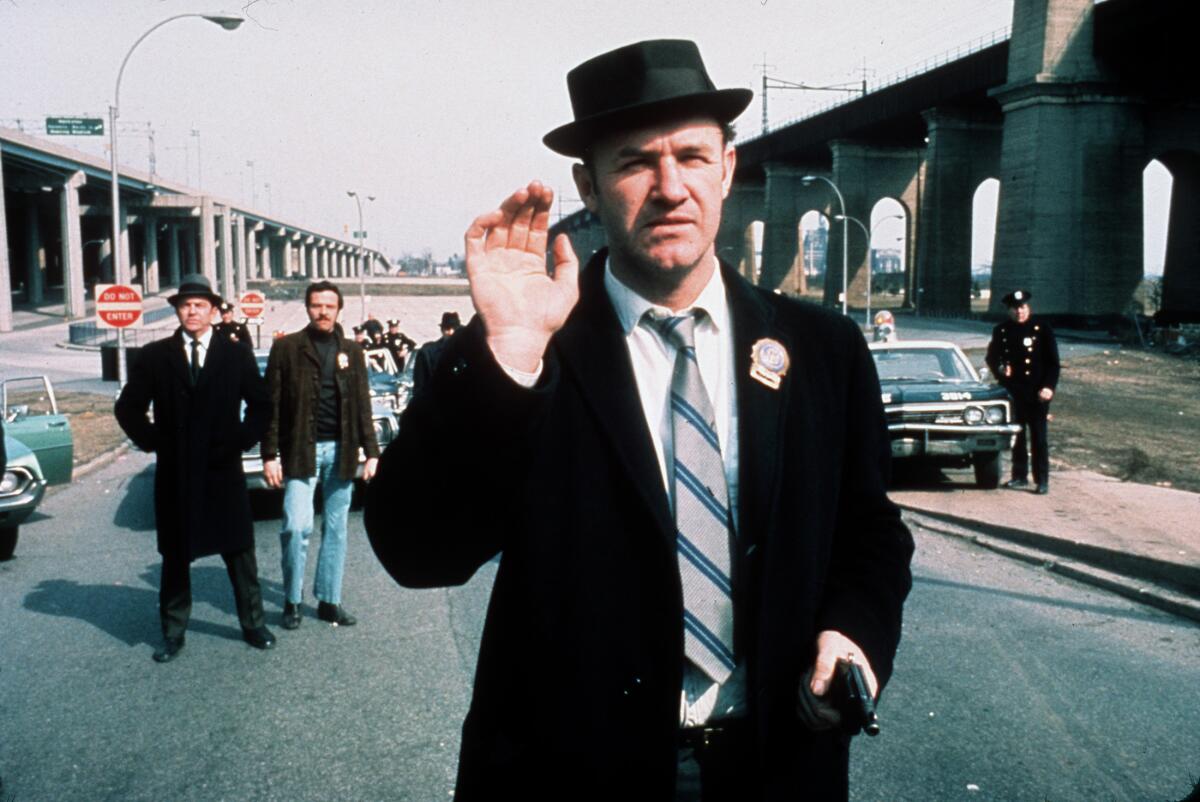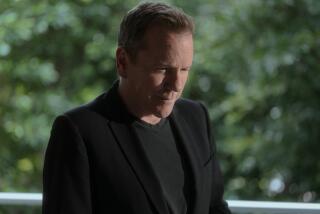In âThe Exorcistâ and beyond, William Friedkin gave the devil his due

As he noted in more than a few of the generously candid interviews he gave over the years, William Friedkin believed profoundly in the existence of evil. That may not sound like the stuff of revelation coming from the director of âThe Exorcist,â though one of the reasons that 1973 landmark lives on so forcefully â the reason itâs outlived all the half-hearted horror homages, the pea-soup parodies and the (still-ongoing) chain of sequels and prequels â is that it treats the reality of the demonic with a deadly serious, utterly unfakable conviction.
To these eyes, the movieâs most subversive suggestion is that the devil that has taken possession of young Regan MacNeil may only be the greater of two evils. The lesser evil, arguably, is the pervasive skepticism that attends her mother and her caretakers as they subject the girl to a battery of medical tests, shot with an icy, clinical detachment thatâs more disturbing than the movieâs head-spinning genre flourishes. Again and again, they cannot countenance the idea that Reganâs malaise might be supernatural. But Friedkin clearly countenances it, and then some: If thereâs a reason âThe Exorcistâ is not just one of the great horror films but one of the great religious films, itâs in how deeply he commits to the redemptive properties of faith and deliverance. The power of Christ compels him too.
Even so, you would be forgiven for watching Friedkinâs movies and feeling that evil interested him more, that it spoke to and drew out his ferociously dark gifts as a filmmaker. It was this specific, signature intensity that distinguished him even among his fellow New Hollywood iconoclasts, including his onetime partners Francis Ford Coppola and Peter Bogdanovich, who took the industry by storm in the early â70s. If Friedkin approached evil on a spiritual and intellectual plane, his genius was for channeling it viscerally and with sometimes brutal bluntness, for conjuring otherworldly menace through the sometimes steady, often-agitated movements of his camera, and for pushing his actors to unimaginable heights of terror and duress.
But Friedkin pushed himself too â the stories of his production woes are legion â and with an unflagging intensity that defines so much of his long, glorious, wayward and undervalued career. In the weeks before his death today at the age of 87, he had been putting the finishing touches on his now-final film, an adaptation of Herman Woukâs play âThe Caine Mutiny Court-Martial,â which will premiere in a few weeks at the Venice International Film Festival.

Strangely enough, I remember emerging from a Venice press screening of another stage-to-screen work, âKiller Joe,â his unrepentantly nasty Texas noir from 2011, and thinking it had been a while since Iâd seen a picture in which a free-floating malevolence seemed to course so palpably through every frame â a malevolence that found its greatest concentration in Matthew McConaugheyâs performance in the vile, predatory, fried-chicken-weaponizing title role. (Itâs the least-heralded touchstone of the McConnaissance, and possibly the best.) âKiller Joeâ was the second of Friedkinâs two screen adaptations of plays by Tracy Letts; the first was âBugâ (2007), a skin-crawlingly claustrophobic psychological freakout, starring Michael Shannon and Ashley Judd, that proved scarcely more reassuring in its evocation of the horrors that fester within.
The viciously assaultive quality of these later movies makes them especially tough, though not impossible, to return to. Itâs not something youâd say about the hectic, unadorned rawness that drives (in every sense) a perennial like âThe French Connectionâ (1971), which vaulted Friedkin to powerhouse prominence and won five Academy Awards, including Oscars for best picture and director. Here, the seething fury of Friedkinâs filmmaking springs to life, not just in Gene Hackmanâs performance as the most dogged of New York detectives, but also through a roaring, no-holds-barred plunge into the heart of the city that the director has long traced back to his own nonfiction roots (as well as the vivid, documentary-infused realism of Costa-Gavrasâ 1969 landmark âZâ).
Pauline Kael, famously not a fan of âThe French Connection,â described it as âan aggravated case of New Yorkâ and âwhat we once feared mass entertainment might become: jolts for jocks.â More than a half-century later, though, the jolting kineticism of Friedkinâs approach feels like something almost akin to classicism, in its back-to-basics spirit and furious texture. Like so many 1970s triumphs of guerrilla-style action filmmaking, that still-astonishing climactic car chase â Hackman wailing on his car horn below as he pursues his quarry fleeing on the B train above â feels like a pulse-pounding rebuke to so many of todayâs Hollywood action movies, with their thrills-free preponderance of computerized green screens and weightless digital extras.
Eras change, and so do movies. Thatâs quite literally true of âThe French Connection,â which made headlines just a few weeks ago after it came to light that a six-second scene, in which Hackman uses a racial slur, had been excised from the movie on digital platforms including Apple TV+ and the Criterion Channel. It was, as many rightly decried, a ludicrous case of censorial overreach that, in the misguided name of sensitivity, sought to shield audiences from the unapologetic racism of Hackmanâs character and the institution he represents, and also to perpetuate the unfortunate myth that a movieâs protagonist must always be its hero.

If âThe French Connectionâ and âThe Exorcistâ made Friedkinâs reputation, much of his subsequent career â which his unkindest detractors might characterize as a 50-year fall from grace, beset by financing woes and aborted projects â remains ripe for rediscovery. I donât know what that means for the many box-office disappointments he directed during the 1980s and â90s, including âRampage,â âBlue Chipsâ and âJade,â a personal favorite of Friedkinâs. But in many cases, the reclamation has been under way for some time, especially in the case of âSorcererâ (1977) and âTo Live and Die in L.A.â (1985), two thrillers that underwhelmed on arrival but have, for many, taken their place among the directorâs crowning achievements.
Few critical re-estimations are perhaps more fascinating than the one that has happened to âCruising,â Friedkinâs 1980 cop thriller set against the backdrop of West Village gay life (and death). Even pre-release, it stirred a massive outcry among those who feared its serial-killer plot would inflame homophobic perceptions and violence. Al Pacinoâs fully committed performance as an undercover cop and the storyâs slippery sexual politics rattled nerves in every direction; critically and commercially, the movie barely lived up to the excitement of its controversy.
But in the decades since, more than a few defenders have repositioned âCruisingâ as the opposite of the anti-gay document it was once dismissed as, instead seeing it as an audacious, playful and exuberantly atmospheric plunge into a zone of unfettered male desire, a bracing sweat-and-leather spectacle that was rare for mainstream cinema then â and remains rare now. Friedkin may have approached this milieu with an outsiderâs naivete, but crucially, the evil that wends its way through âCruisingâ is merely in this world, not of it.
That sets it decidedly apart from the horror that swiftly and unrelentingly suffuses âSorcerer,â his masterly nail-biter about four damned men making a journey through a Colombian heart of darkness. Although the film was adapted (by Walon Green) from the same Georges Arnaud novel that spawned Henri-Georges Clouzotâs classic âThe Wages of Fearâ (1953), Friedkin insisted he had embarked on not a remake but a reimagining. And indeed, what emerged from this astoundingly complicated and embattled production feels like a revved-up beast of its own making, a tour de force of blood, rain, oil and nitroglycerin that you know is doomed to end badly and becomes all the more mesmerizing for it.
Itâs the work of a filmmaker who in his finest moments could turn the screen into a portal, opening his eyes and ours to the darkest of magic.
More to Read
Only good movies
Get the Indie Focus newsletter, Mark Olsen's weekly guide to the world of cinema.
You may occasionally receive promotional content from the Los Angeles Times.









